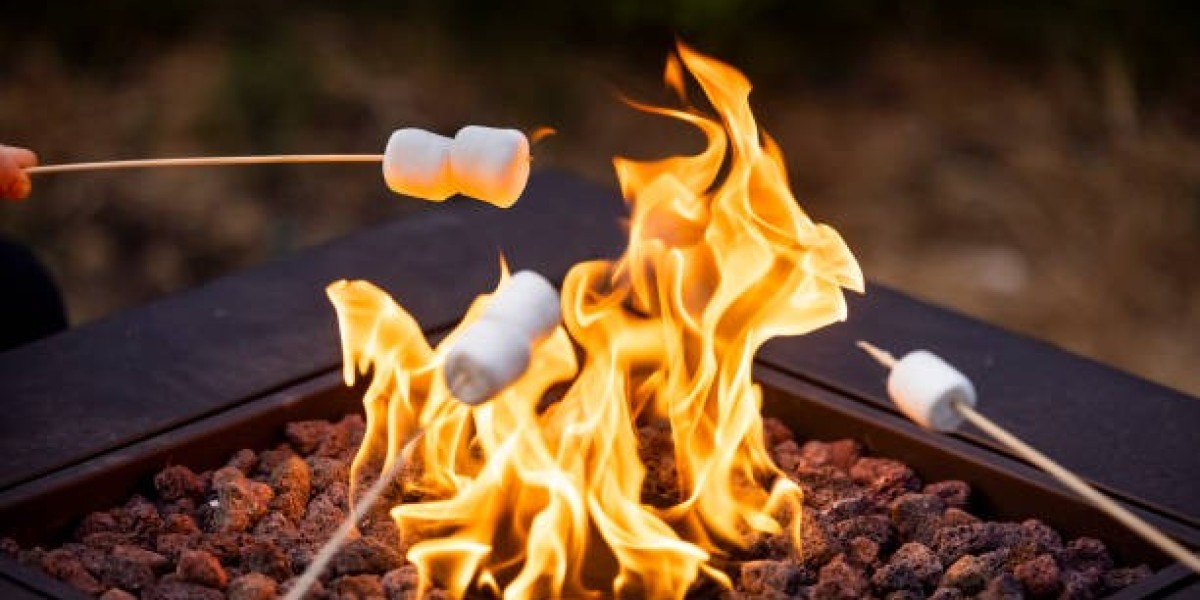As outdoor living spaces become more popular, many homeowners are seeking ways to enhance their backyards, patios, and gardens. One popular addition is the propane gas fire pit, a convenient and stylish alternative to traditional wood-burning fire pits st louis . These fire pits provide warmth and ambiance, making them perfect for gatherings and cozy nights outdoors. However, as with any outdoor appliance, safety is a crucial consideration. In this blog post, we will explore the potential safety concerns associated with propane gas fire pits and offer tips to ensure a safe and enjoyable experience.
Understanding Propane Gas Fire Pits
Propane gas fire pits are designed to use liquid propane as fuel, which is stored in a tank connected to the fire pit. This setup offers several advantages, including easy ignition, adjustable flame control, and cleaner burning compared to wood. Despite these benefits, it's essential to recognize that propane is a highly flammable substance. Therefore, proper installation, operation, and maintenance are critical to prevent accidents.
Common Safety Concerns
1. Gas Leaks: One of the most significant safety concerns with propane gas fire pits is the risk of gas leaks. A gas leak can occur due to faulty connections, damaged hoses, or improperly sealed tanks. A gas leak not only wastes fuel but also poses a serious fire and explosion hazard. To detect leaks, homeowners can perform a simple soapy water test on the connections. If bubbles form, it indicates a leak that needs to be addressed immediately.
2. Ventilation: Proper ventilation is vital when using a propane gas fire pit. Propane is heavier than air and can accumulate in low-lying areas, creating a risk of asphyxiation or explosion. It's crucial to use propane fire pits in open or well-ventilated spaces to ensure that any escaping gas can dissipate quickly.
3. Proximity to Flammable Materials: Another safety concern is the placement of the fire pit. It should be situated away from flammable materials such as wooden structures, dry leaves, and other combustible items. A safe distance of at least 10 feet is recommended to prevent accidental fires.
Installation and Setup Safety
1. Professional Installation: For optimal safety, it's advisable to have a professional install your propane gas fire pit. A qualified technician can ensure that all connections are secure and that the fire pit is set up according to manufacturer guidelines. This reduces the risk of gas leaks and other installation-related issues.
2. Proper Tank Storage: The propane tank should be stored upright and in a location where it will not be exposed to extreme temperatures or direct sunlight. Overheating can increase the pressure inside the tank, potentially leading to a rupture or explosion. Additionally, the tank should be kept away from open flames and sources of ignition.
3. Using the Correct Components: Always use components that are specifically designed for your propane fire pit model. This includes regulators, hoses, and connectors. Using incompatible or damaged parts can lead to malfunctions and safety hazards.
Operational Safety Tips
1. Lighting the Fire Pit: When lighting the fire pit, follow the manufacturer’s instructions carefully. Typically, this involves turning on the gas supply and using a long lighter to ignite the gas. Never lean over the fire pit while lighting it, as this can result in burns or other injuries if the gas ignites unexpectedly.
2. Monitoring the Flame: Once the fire pit is lit, it's important to monitor the flame continuously. Never leave a lit fire pit unattended, and ensure that children and pets are kept at a safe distance. If the flame goes out unexpectedly, turn off the gas supply and wait several minutes before attempting to relight it. This allows any accumulated gas to dissipate.
3. Shutting Down Properly: After use, make sure to turn off the gas supply completely. This prevents gas from continuing to flow and accumulating around the fire pit. If you suspect a gas leak, do not attempt to shut off the gas; instead, move to a safe location and contact emergency services.
Maintenance and Inspection
**1. Regular Inspections: Regularly inspect your propane gas fire pit for signs of wear and tear. Check hoses and connections for cracks, leaks, or other damage. Replace any damaged parts immediately to prevent potential hazards.
2. Cleaning the Fire Pit: Keep the fire pit clean by removing any debris, such as leaves or twigs, that may accumulate around the burner and ignition area. This helps prevent blockages and ensures that the fire pit operates efficiently.
3. Professional Servicing: Periodically, have your propane gas fire pit serviced by a professional. They can perform a thorough inspection and maintenance check, ensuring that all components are in good working condition and that the fire pit is safe to use.
Conclusion
Propane gas fire pits can be a wonderful addition to any outdoor space, providing warmth and a focal point for social gatherings. However, it's essential to be aware of the safety concerns and take appropriate measures to mitigate risks. By following proper installation, operation, and maintenance procedures, you can enjoy your fire pit with peace of mind.







